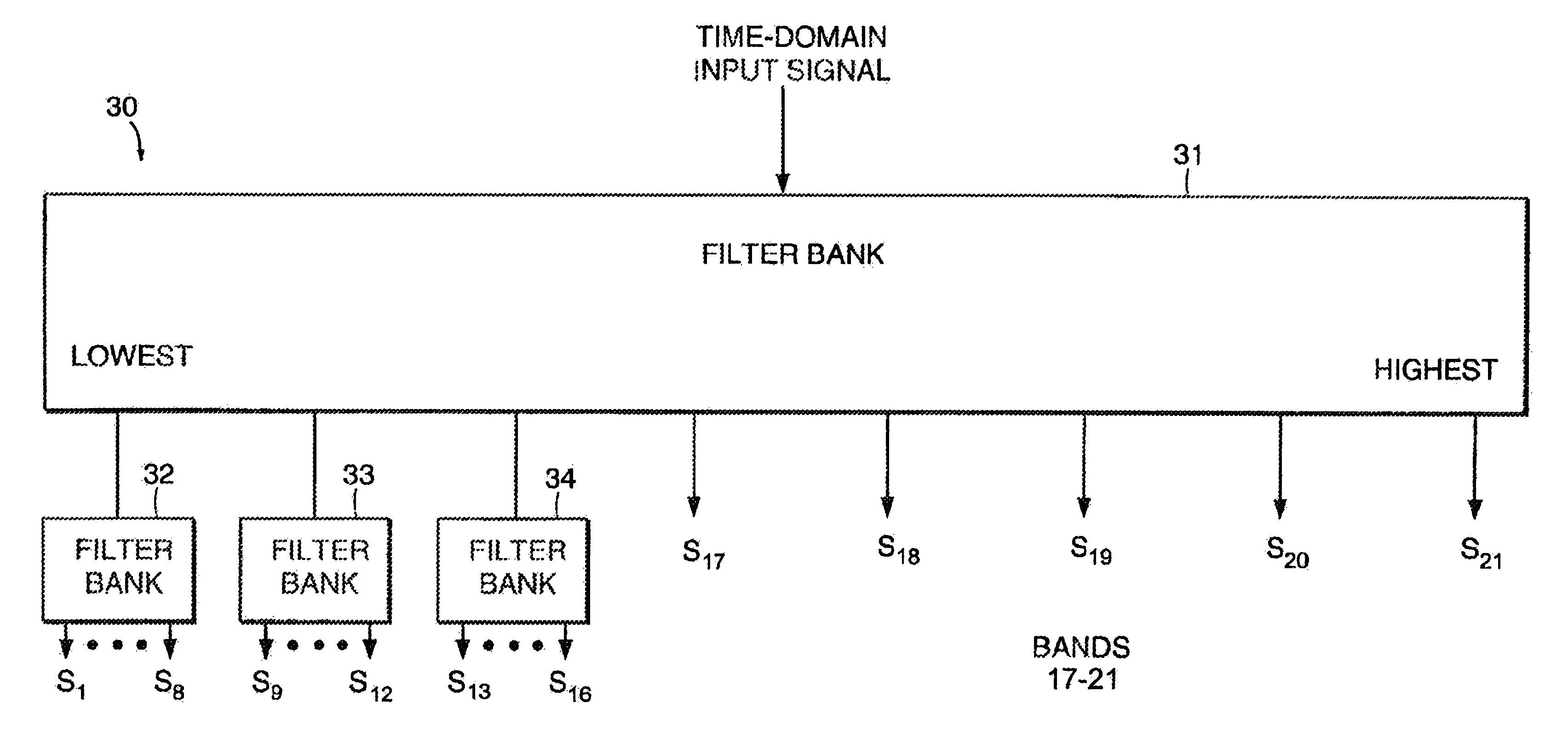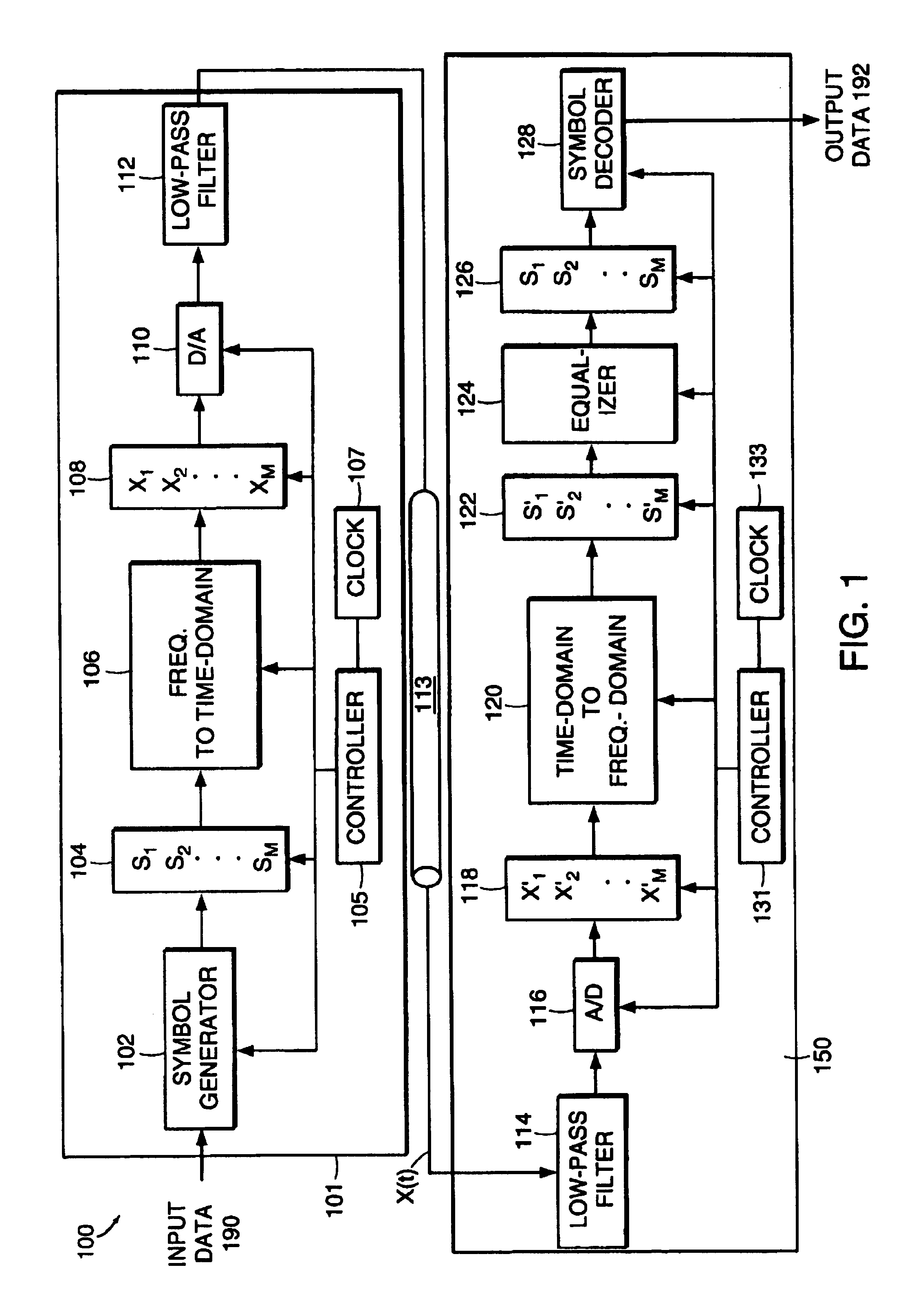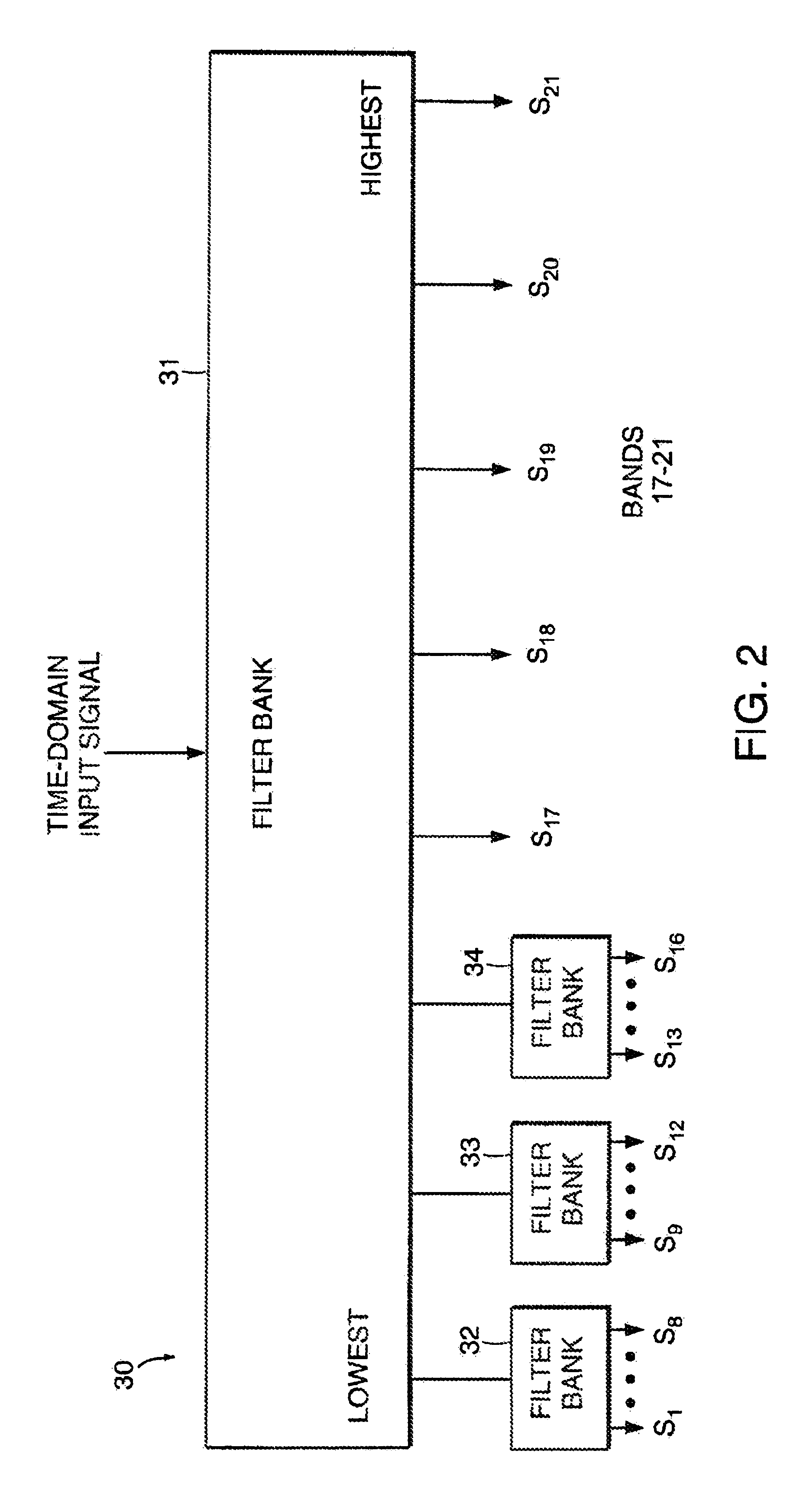Signal processing utilizing a tree-structured array
a tree structure and signal processing technology, applied in the field of data transmission systems, can solve the problems of difficult transmission of such audio tracks over limited bandwidth transmission systems, inability to use sub-bands that correspond to these radio signals, and high storage requirements for even a short recording, so as to achieve the effect of reducing the computational workload
- Summary
- Abstract
- Description
- Claims
- Application Information
AI Technical Summary
Benefits of technology
Problems solved by technology
Method used
Image
Examples
Embodiment Construction
[0047]The manner in which the present invention operates can be more easily understood with reference to FIG. 1 which is a block diagram of a typical prior art multi-carrier transceiver 100. Transceiver 100 transmits data on a communication link 113. The input data stream is received by a symbol generator 102 which converts a run of data bits from the input stream into M symbols S1, S2, . . . , SM which are stored in a register 104. The number of possible states for each symbol will depend on the noise levels in the corresponding frequency band on the transmission channel 113 and on the error rate that can be tolerated by the data. For the purposes of the present discussion, it is sufficient to note that each symbol is a number whose absolute value may vary from 0 to some predetermined upper bound. For example, if a symbol has 16 possible values, this symbol can be used to represent 4 bits in the input data stream.
[0048]Transceiver 100 treats the symbols Si as if they were the ampli...
PUM
 Login to View More
Login to View More Abstract
Description
Claims
Application Information
 Login to View More
Login to View More - R&D
- Intellectual Property
- Life Sciences
- Materials
- Tech Scout
- Unparalleled Data Quality
- Higher Quality Content
- 60% Fewer Hallucinations
Browse by: Latest US Patents, China's latest patents, Technical Efficacy Thesaurus, Application Domain, Technology Topic, Popular Technical Reports.
© 2025 PatSnap. All rights reserved.Legal|Privacy policy|Modern Slavery Act Transparency Statement|Sitemap|About US| Contact US: help@patsnap.com



